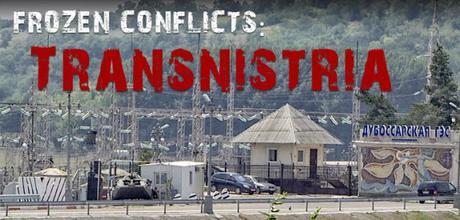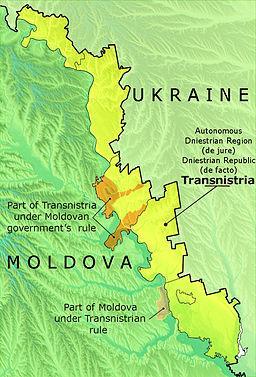
CIPE’s Frozen Conflicts blog series looks at the current situation in seven breakaway regions of the former Soviet Union, with a particular focus on the economic dimension. To learn more about frozen conflicts and what can be done about them read CIPE’s Economic Reform Feature Service article on the subject.
The conflict between Ukraine and Russia has set in motion events that could have major implications for the unrecognized Moldovan breakaway region of Transnistria. Wedged between Ukraine and Moldova, two countries that have taken a Western turn in their foreign policy, Transnistria is distant from its backers in Moscow.
In May 2015, the Ukrainian parliament suspended all military co-operation with Russia, including a 1995 agreement giving Russia transit rights across Ukraine to reach Transnistria. Losing access via Ukraine means that Russia must route supplies to Transnistria by air through Moldova’s capital Chisinau, but the Moldovan government has been turning back suspected military personnel, and Tiraspol — Transnistria’s capital and the second largest city in Moldova — has an runway unsuitable for cargo flights from Russia.
The loss of direct Russian access has limited the flow of aid, one Transnistria’s most important revenue sources, and put the economic squeeze on a region already weakened by the poor economic situation in Russia. Industries in Transnistria, such as they are, have been shutting down or decreasing production. Moldova’s signing of a key trade deal with the European Union will increase the pressure on Transnistria’s economy. The net result could be to push Transnistria back toward its Moldovan parent state, in the process resolving one of the oldest post-Soviet frozen conflicts.

An outgrowth of the collapse of the Soviet Union, Transnistria gained de facto independence in 1992 following a brief war, though international law regards the region as still part of Moldova. Transnistria remains heavily under Russian influence. Since the end of the armed conflict, Russian troops and military equipment have been stationed in the region, presumably serving as a sort of buffer against NATO and EU advancement into Russia’s “sphere of influence.” In a 2006 referendum, 97 percent of the Transnistrian voters opted to join Russia, though this result was not recognized by the Kremlin. Only days after Russia annexed Crimea in March 2014, Transnistrian leaders again appealed to Moscow to join the Russian Federation, but without success.
Transnistria’s economy of is a blend of a command economy inherited from the Soviet Union and some features of a market economy, as well as an extensive black market. The economy is unstable and inefficient, and the government runs a consistent budget deficit. As a result, Transnistria is heavily reliant on Russian energy subsidies, aid, and remittances. Russia uses the region’s weak economy to both exercise control and forestall any resolution of the conflict with Moldova. It should be noted, though, that while Transnistria is one of Europe’s poorest regions, according to one source its 2012 per capita GDP per capita of $2,140 was higher than Moldova’s, at $2,040.
Currently, 29 percent of Transnistria’s foreign trade is oriented towards the EU, providing a much-needed source of foreign exchange. Thus the approaching expiration of the Autonomous Trade Preferences (ATP) agreement between the EU and Moldova, which lifts duties on goods flowing from Moldova (including Transnistria) to the EU, could spell trouble for the breakaway region’s weak economy. The ATP will be replaced by the Deep and Comprehensive Free Trade Agreement (DCFTA), which Moldova signed with the European Union in August 2014. Transnistria’s leaders are in a bind: either sign on to Moldova’s DCFTA, or see trade links with Europe suffer mightily.
Transnistria’s resistance to the DCFTA stems from the fact that it would weaken the region’s aspirations of independence, as well as undermine Transnistria’s political orientation toward Moscow. Under the DCFTA, any goods exported to the EU from Transnistria via Moldova proper would require Transnistria to conform to certain Moldovan policy requirements concerning, for example, competition policy, regulatory approximation with EU rules, intellectual property rights, and public sector procurement. Companies would have to comply with EU conditions regarding standards and certificates. In sum, the DCFTA would grant Moldova some control over Transnistria’s firms. Any such turn toward Moldova and the EU by the Transnistrian government would likely not be tolerated by Russia, which could imperil Russian subsidies and grants the region depends on.
At the same time, if Transnistria does not implement the necessary regulatory changes, then its goods sent via Moldova to the EU would not qualify for preferential status after January 2016, and the WTO’s Most Favored Nation (MFN) tariffs would enter into force. This would result in considerable tariff increases for Transnistrian goods entering the EU, leading to significant losses for the export-reliant sectors of the Transnistrian economy.
If the Transnistrian authorities are willing to pay the high short-term cost of signing on to Moldova’s DCFTA, thus moving toward the EU rather than staying tethered to a shrinking Russian economy and risking the loss of preferential trade access, then the region could avoid economic collapse. Some experts already anticipate that businesses in Transnistria will at least partially conform to the criteria in order to retain their competitiveness. Transnistria could try to preserve some elements of its economy that are competitive, and to develop trade with the EU.
Eventually, such an agreement could also lead Transnistria to adopt parts of the EU’s acquis communautaire (the body of laws that countries must adopt in order to join the EU), becoming a tool to support deeper integration with the rest of Moldova. Similarly, the EU might be persuaded to offer Transnistria financial help under the condition that the region will implement the DCFTA in the future. Of course, if that scenario plays out, then there is the risk that Moscow, sensing the possible loss of a de facto client state, might choose to escalate tensions in the region in order to block a Transnistrian rapprochement with Moldova and the EU.
Ann Mette Sander Nielsen is an undergraduate student at Freie Universität Berlin, where she majors in Political Science. Her research interests include Russian and Eurasian politics, the European Union, and international political economy. In the summer of 2015, she was an intern at the Washington, DC offices of the Center for International Private Enterprise, carrying out extensive research on frozen conflicts in the Eurasia region.

